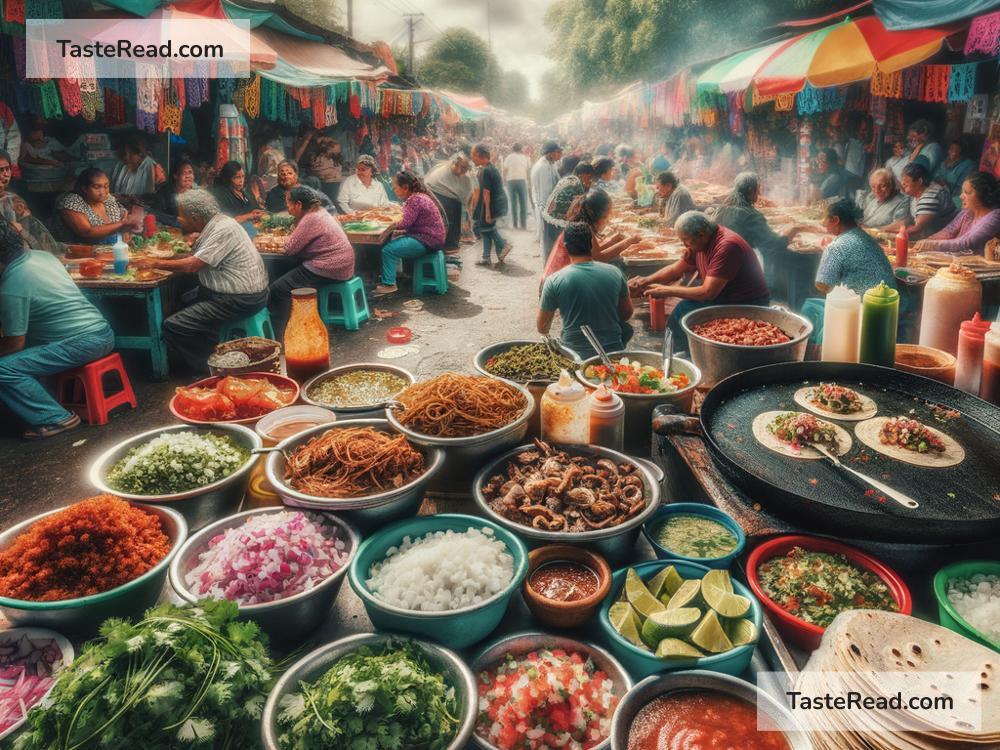The Influence of Mexican Street Tacos
When you think of Mexican food, one of the first things that might come to mind is tacos. But there’s something special about Mexican street tacos. These small, flavorful bites have spread far beyond Mexico and have become popular all over the world. They are more than just a meal; they are a cultural symbol that connects people to Mexico’s rich traditions, history, and flavors.
What Are Mexican Street Tacos?
Mexican street tacos are a simple yet delicious type of taco. They are usually served on small, soft corn tortillas, and the filling often includes meat, fresh toppings, and homemade salsa. Popular meats for street tacos include carne asada (grilled beef), al pastor (spicy marinated pork), barbacoa (slow-cooked beef), and carnitas (tender pork). Unlike the larger tacos you might find in some restaurants, street tacos focus on fresh, authentic flavors without too many extras like cheese, sour cream, or lettuce.
Street tacos originated in Mexico as a quick, portable meal for workers who needed something affordable and easy to eat on the go. Vendors served them from food carts or stands, often late into the night, and they quickly became a favorite among locals. Today, they are an essential part of Mexico’s street food culture and a popular choice for anyone looking for a bite full of flavor.
How Did Street Tacos Become Popular Around the World?
Mexican street tacos have grown beyond Mexico thanks to migration, restaurants, and global food trends. Many Mexican immigrants bring their cooking traditions to other countries, sharing recipes that are passed down through generations. As people in the U.S., Canada, and other nations tried these tacos, they fell in love with the vibrant flavors, simple ingredients, and warm culture behind the dish.
The rise of Mexican restaurants and food trucks also made street tacos widely available. Food trucks, in particular, brought traditional street tacos to the masses in places where authentic Mexican food wasn’t common before. Social media helped spread the word as people shared pictures of tacos alongside glowing reviews. Soon, street tacos became a culinary phenomenon.
Today, you can find street tacos in almost every major city worldwide, from Los Angeles to Tokyo. While some versions may adapt slightly to local tastes, many taco fans appreciate the authentic flavors and preparation that started in Mexico’s streets.
Why Are Street Tacos So Influential?
Mexican street tacos aren’t just delicious; they represent so much more. Here’s why they have a powerful influence:
-
Celebrating Mexican Culture: Tacos highlight Mexico’s history, traditions, and love for good food. They bring people together around something simple yet deeply meaningful. Whether it’s through Mexican-style marinades, handmade tortillas, or spicy salsas, street tacos are a reminder of the country’s culinary roots.
-
Promoting Fresh Ingredients: Street tacos show the value of fresh, simple ingredients. They are often made using locally-sourced produce, which contributes to their vibrant taste. Compared to processed fast foods, tacos demonstrate how street food can be flavorful and healthy.
-
Encouraging Global Connections: Street tacos promote cultural exchange. When people from different parts of the world eat tacos, they get a taste of Mexico’s identity. Food is often a way for people to understand and appreciate new cultures. Tacos make this learning experience accessible and fun.
-
Inspiring Creativity: While traditional street tacos follow familiar recipes, chefs and home cooks across the globe are experimenting with new flavors. For example, Korean-Mexican fusion tacos combine spicy marinated pork with kimchi. Indian-Mexican variations might add curry or chutney. These creative spins on tacos keep the dish fresh and exciting for everyone to enjoy.
Where Can You Find Street Tacos Today?
If you’re lucky enough to visit Mexico, street tacos are everywhere—from bustling markets to roadside stands. Mexico City, Tijuana, and Guadalajara are famous for their taco scenes, with countless vendors offering variations of this iconic food. Each region of Mexico has its own specialty, whether it’s crispy fish tacos from Baja California or cochinita pibil (slow-roasted pork) tacos from Yucatán.
Outside of Mexico, cities like Los Angeles, San Diego, Houston, and Chicago have thriving taco cultures too. Many restaurants and food trucks aim to recreate the authentic Mexican experience, while others add their own twist. Even international cities like London and Sydney have embraced street tacos as a trendy yet timeless dish.
For those who want to try making street tacos at home, the key is simplicity. Use fresh corn tortillas, flavorful meat, and a good salsa or guacamole. The beauty of street tacos is that they don’t require fancy equipment or ingredients—just passion for bold flavors.
Final Thoughts
Mexican street tacos are much more than food—they are a bridge between cultures, a celebration of tradition, and a reminder that simple things can be extraordinary. Their influence can be seen in food markets, festivals, family gatherings, and high-end restaurants alike. Whether you’re eating them from a bustling street vendor in Mexico or enjoying them at home with friends, street tacos bring joy and connection to people everywhere.
So next time you bite into a taco, remember the history and love that went into making it. Mexican street tacos have truly changed the way we think about food—one flavorful bite at a time.


